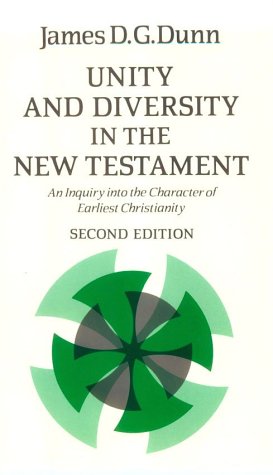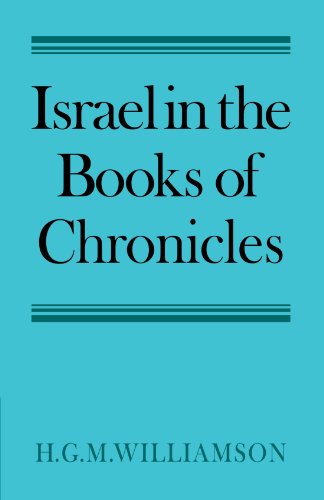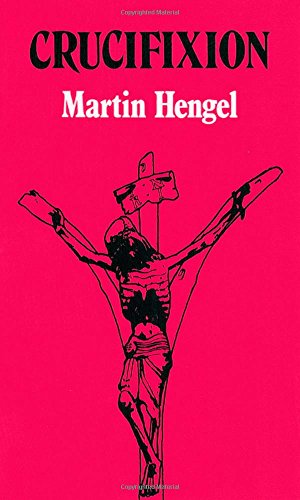Unity and Diversity in the New Testament: an inquiry into the character of earliest Christianity
Written by James D. G. Dunn Reviewed By Dick FranceDr Dunn’s third major work is a reduction to writing of a course of lectures offered to third-year undergraduates. Reading the book, I tried to imagine myself as one of those undergraduates; I would have found them seldom dull, frequently provocative, but above all indigestible. For here in one (admittedly very long) book is an attempt to survey most of the central issues of NT theology, and a fair sampling of the less central ones as well. As such it is a prodigious tour de force, whose bibliography and notes testify to an enviable breadth of knowledge of mainstream contemporary scholarship (particularly of the Bultmannian school). But the question remains whether it was a valid enterprise in the first place.
The enterprise is primarily ‘to explore the issues raised by Bauer (Orthodoxy and Heresy in Earliest Christianity) with reference to the NT.… What is “the unity of the NT”? How broad is the diversity within the NT?’ But Dr Dunn hopes for more; he proposes ‘to bridge the gaps which too often exist between literary critical study of the NT documents, historical sociological inquiry into the beginnings of Christianity, and theological investigation of the beliefs and practices of the first-century Christians.’ And if that were still not a sufficiently tall order, he proposes at the same time to write ‘a kind of advanced introduction to the NT and to first-century Christianity’, a successor to Moule’s Birth of the New Testament. Lesser mortals might regard such a programme as ambitious for a lifetime; Dr Dunn produced it two years after his last major work.
The theme of ‘unity and diversity’ is important and controversial, and an introduction and guide to this debate was much needed, but I feel this book would have been of more value to students if Dr Dunn had resisted the temptation to pursue each of the subjects it involves as a study in its own right. Each chapter has the makings of a book, and the resultant compression results both in indigestion and in apparently cavalier generalizations and one-sided treatments.
Some chapters in themselves form useful ‘guides to the debate about’ a given issue. Jewish Christianity is an area too little studied, and this chapter (235–266) brings to life the issues involved in the emergence of a Jewish sect as a world religion; the observation that in the case of Ebionism heresy consisted in the failure to change bears some thought. The chapter on Apocalyptic Christianity (309–340) reads as a treatise on the relevance of apocalyptic rather than as a contribution to the theme of the book, but as such it is a welcome recognition of a neglected (and feared?) feature essential to primitive Christianity. A trenchant critique of liturgical and lectionary theories of the origin of NT books (141–8) will be welcomed. Unexpected ‘readings between the lines’ crop up from time to time and demand further study, e.g. that Paul was ‘defeated’ in the Antioch controversy of Galatians 2 (254), and the Jerusalem church rejected his collection (257).
But the reader, who will be grateful for such stimulus, must also be on his guard against one-sided presentations of complex issues. The conclusion that Jesus was not, in his own teaching, the object of faith (16) is reached in just three pages by ignoring much of the gospel record. The discussion of Jesus’ consciousness of Sonship entirely on the basis of ‘Abba’ (187; 211f.) results in a very weak argument in comparison with Richard Bauckham’s article in SJT 31. The one-paragraph discussion of Matthew 5:17–19 (246) assumes that the issue is that of the continuing validity of the law as regulation, despite the important work of R. J. Banks (footnoted but not discussed). A single paragraph (217–8) which presents ‘the earliest post-Easter uses of the four main christological titles’ as all forward-looking begs a whole series of questions. I noted many other such oversimplifications, and no doubt they are inevitable given the scope of the book; but that is just the problem.
The uncritical acceptance of many shibboleths of current critical orthodoxy is also disappointing. The presentation of ‘early catholicism’ on the basis of Käsemann’s construction, even though the discussion shows how unworkable this was, is symptomatic; an artificial scheme of ‘catholicism’ imposed on a wide variety of NT features obscures rather than clarifies the diversity of NT approaches to faith. The discussion of the gospel traditions unwarrantably concludes from a brief listing of the different ways in which the traditions were handled and expressed that the earliest churches had no conception of an established content to the Jesus-traditions (71–75). Pages 31–32 come near to Bultmann’s famous description of the message of Jesus as only a presupposition for NT theology, not a part of it; and in chapter XI the shades of Tübingen loom large. We even find the old chestnut that Matthew created a second donkey out of Zechariah 9:9 (99), and there is the stock presentation (92f.) of Qumran pesher as a free alteration of the OT text-form as in Matthew 27:9f.; when will someone produce an actual instance of a similar freedom from Qumran?!
Examples could be multiplied; but then Dr Dunn’s aim is ‘to be provocative rather than definitive’ (6), and in that aim he too often seems to succeed.
Sometimes I think I detect a deliberate teasing of the more conservative: ‘One of the earliest heresies was conservatism’ (italicised and with exclamation mark, 266). The dismissal of the special inspiration of the NT books in three sentences (386) was not essential to his argument, nor does it convey much without some discussion of what ‘inspiration’ means—it is more a dig than a debating point. And to conclude the discussion of a controversial point with ‘This we have demonstrated. There can now be no disputing the fact that …’ (335) is hardly calculated to win friends!
Equally galling to the conservative reader will be the easy assumption of critical views which ought not to be taken for granted. Thus the Pastorals are by a late first-century disciple who was out of sympathy with Paul, and was ‘in danger of shutting out the Spirit’ (198), while 1 Peter is a ‘Pauline’ letter half-way between (116). The Fourth Gospel is regularly taken as evidence for Johannine views, not for Jesus. In the gospels ‘we have at least some historical reminiscences of Jesus’ ministry and we have the actual words of Jesus preserved in at least a few instances’ (184), but the details of Jesus’ predictions are ‘couched too much in terms of what actually transpired’ (211). It is clear, however, that Jesus was mistaken about the date of the parousia (225). None of this is new or unexpected, but it is not all self-evident.
But perhaps it is not fair to expect justification for every statement and assumption in a work as wide-ranging as this, and certainly a review should not focus only on the details, many of which have little bearing on the main theme. Here the emphasis is decidedly on the diversity within the NT, which is presented as so wide that there was no such thing as ‘the NT teaching’ on any subject. ‘Orthodoxy’ is thus an inappropriate category for NT thought; indeed ‘the biggest heresy of all is the insistence that there is only one ecclesiastical obedience, only one orthodoxy’ (366). But ‘diversity’ is very diverse; varieties of devotional expression or of ecclesiastical organization are not the same as doctrinal disagreement, and the former are not evidence of the latter. Diversity and orthodox belief are not opposites, nor does doctrinal unity demand religious uniformity, as modern experience makes plain. To lump the different types of diversity together as evidence for the ‘heresy of orthodoxy’ is not very illuminating.
Dr Dunn’s hunt for diversity is energetic. In discussing the kerygma of Acts (17–21) he is ‘struck’ or ‘astonished’ twice per page by its contrasts with other NT books. This is because Acts does not include many elements prominent elsewhere in the NT. But why should Acts echo the other books? And does its failure to do so place it in contradiction with them, or only in complementarity? Similarly when Acts 6–7 is read as a ‘confessional schism’ within Christianity over its attitude to the Temple, an ‘open split’ between conservatives and liberals (268–275), there seems to be a touch of melodrama; and to progress from the recognition of gnosticizing tendencies at Corinth to the assertion that ‘there were gnostics within the church’ whom Paul recognized as members of the body of Christ (275–9) is to press the search for diversity to the limit, by turning variant tendencies into defined ‘positions’.
We cannot put the clock back to the pre-Bauer era, and Dr Dunn is right to encourage us to accept that early Christianity was richly varied. It is true that ‘there was no single normative form of Christianity in the first century’ (373)—there never has been, and one hopes there never will be. Evangelicals of all people should be happy to recognize in the NT ‘the radical openness of diverse nonconformity’ (306). But why should this exclude the concepts of orthodoxy and of heresy, the insistence that there is ‘no other gospel’? Defining the limits of that gospel has never been easy, but there is plenty of material in Dr Dunn’s book which shows that the desire to do so was not the concern only of the crusty old bureaucrat who is credited with the Pastorals. It is a pity if Dr Dunn’s eagerness to maximize diversity has given the impression that for the NT writers, with all their variety of approach, basic doctrinal agreement did not matter.
On this area of basic agreement (i.e. the ‘unity’ aspect of the title) the book is less satisfactory. Again and again the unity is found to consist in ‘the unity between the historical Jesus and the exalted Christ’—or, more simply, in ‘Jesus himself’ (369–370), and this is frequently said to be the only unifying feature in a diverse scene. Two observations suggest themselves. First, is this NT language? It sounds remarkably like the language of modern debate in the context of existentialism. Was this ‘continuity’ ever an issue for the earliest Christians? Is it not an assumption too obvious to be mentioned? You do not stress that Jesus of Nazareth=the Christ of faith until someone has questioned it. Second, to observe that all Christian strands agree on the centrality of Jesus, while it is undeniably true, does not take us very far; it sounds like tautology. I am sure Dr Dunn’s point is much more significant than that, but as it is frequently reiterated in this simple form it looks more and more like a dazzling if anachronistic exposition of the obvious. At the end of the book there is gathered up a list of other unifying features (370), and a fuller development of these would have provided a more full-bodied account of the essentials of NT Christianity, and would have gone a long way to counterbalance the overemphasis on diversity which is the book’s dominant impression as it stands.
Dr Dunn’s hope is that a fuller recognition of NT diversity will bring modern liberal and conservative traditions to accept, respect and welcome one another as equally valid expressions of Christianity (79, 377f.). I wonder. The situation does not seem to me to be parallel. Perhaps it only illustrates my conservatism, but Dr Dunn has not convinced me that doctrinal liberalism was an accepted option in the NT. Varieties of spiritual experience and expression, of ecclesiastical organization, of ethical stance and of theological emphasis: all these I can see and welcome in the NT and in the church today. But I cannot see any NT writer tolerating ‘another gospel’ when it comes to the essentials of Christian belief, and those essentials go well beyond a simple ‘commitment to Jesus’. If that is so, however difficult its definition may be, ‘orthodoxy’ remains a vital concept.
Dick France
Llangelynin, Gwynedd






